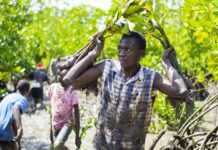By Mercy Chepkemoi
Kenya has enacted the Climate Change (Amendment) Bill, 2023 into an Act of Parliament. The Act which came into force on 15th September,2023 is notably a step in the right direction as the Act seeks to push Kenya towards realizing its obligations under the ratified Paris Agreement.
The Act has, in a nutshell, brought with it changes in relation to Article 6 of the Paris Agreement by introducing carbon markets and its regulations thereto. Companies or individuals in a regulated manner can now trade and engage in climate financing activities in a system where they can buy or sell carbon credits.
To protect community resources, the Act has made it mandatory that every land-based project carried out under the Act must protect the economic, social, and cultural well-being of the community.
This is more so for the projects found in community land. To eliminate the ambiguity on what constitutes a community for purposes of carbon projects, the Act has defined the community as “a consciously distinct and organized group of users of community land who are citizens of Kenya and share any of the following attributes: (a) common ancestry; (b) similar culture or unique mode of livelihood; (c) socio-economic or other similar common interest; (d) geographical space; (e) ecological space; or (f) ethnicity.
The benefits themselves yet to be harvested by the Communities from the Carbon Markets are clear, but the link to emission reductions can be elusive. The REDD+ Projects more those developed in community land, should be centered in the communities’ self-governance. Communities ought to choose the development of activities focusing on an array of social, health, and economic development issues.
But the big question begs, will the communities benefit from this scheme, or is this just going to be another philanthropic add-on?

Most of the long-term projects in rural areas that actively involve local communities and generate carbon credits operate within the voluntary carbon markets (VCM), with the intention of empowering these communities by creating additional income streams and promoting sustainable living practices.
Carbon credit trading occurs primarily in two distinct markets: compliance trading and voluntary trading. Compliance trading is subject to government regulations and enforcement, while voluntary trading operates on a voluntary basis without a government mandate.
Agreed on at the Convention on Biological Diversity COP14, three principles to further promote alignment between the rights of communities and the VCM were identified: recognition, participation, and transparency.
1. Recognition
Land tenure rights of communities should be explicitly recognized and secured. This begins with recognizing land rights and is followed by assisting Indigenous peoples and local communities in their capacity to describe, price, and trade credits.
All captured in the Community Development Agreement together with who the stakeholders of the projects are, the annual social contribution of the aggregate earnings of the community to be disbursed and managed for the benefit of the community, manner of engagement with local stakeholders, sharing of benefits from carbon markets and carbon credits between the project proponents and impacted communities and the proposed socio-economic development around community priorities.
To support this effort, the mandatory period for review or amendment of a Community Development Agreement is 5 years with the Agreement providing for framework on how disputes can be solved.
2. Participation
Equitable projects should engage Local Communities and Indigenous People through inclusive project design and robust distribution of both monetary and nonmonetary benefits like cash payments, tenure security, and ecosystem protection.
To ensure participation throughout project design, project developers should respect and advance the Free, Prior, and Informed Consent (FPIC) right, recognized in the United Nations Declaration on the Rights of Indigenous Peoples.
The FPIC empowers people to negotiate the conditions for project design, implementation, monitoring, and evaluation. By leveling information and power asymmetries, FPIC is a powerful tool to ensure that community-led climate action is delivered.
- Transparency
Communities often have reservations about the concept of revenue generation and the market system in the context of carbon credits and prefer to take control over the determination of the quantity or allocation of carbon credits. Project proponents must disclose things like credit and transaction data which is reflective on the ground.
What’s Next
Transferring these principles from paper to practice will not be achieved if we don’t first create the appropriate market infrastructure. Urgent climate action needs a purpose driven VCM designed to serve people and the planet alike, relying on improved visibility through data, strong monitoring and evaluation, and a leveled field to engage Indigenous peoples and local communities.
Well-drafted contract structures between the communities and the project proponents can support trust and protect IPLCs and local communities from future price increases that benefit buyers only. Capital markets can serve equity as well, but only if properly regulated and if carbon-based securities are not separated from their underlying assets. Market regulators are catching up. Without oversight, the market is prone to litigation. Access to the market should be limited to good faith sellers and buyers who refrain from predatory behaviors.
Mercy Chepkemoi is an Advocate of the High Court of Kenya.














